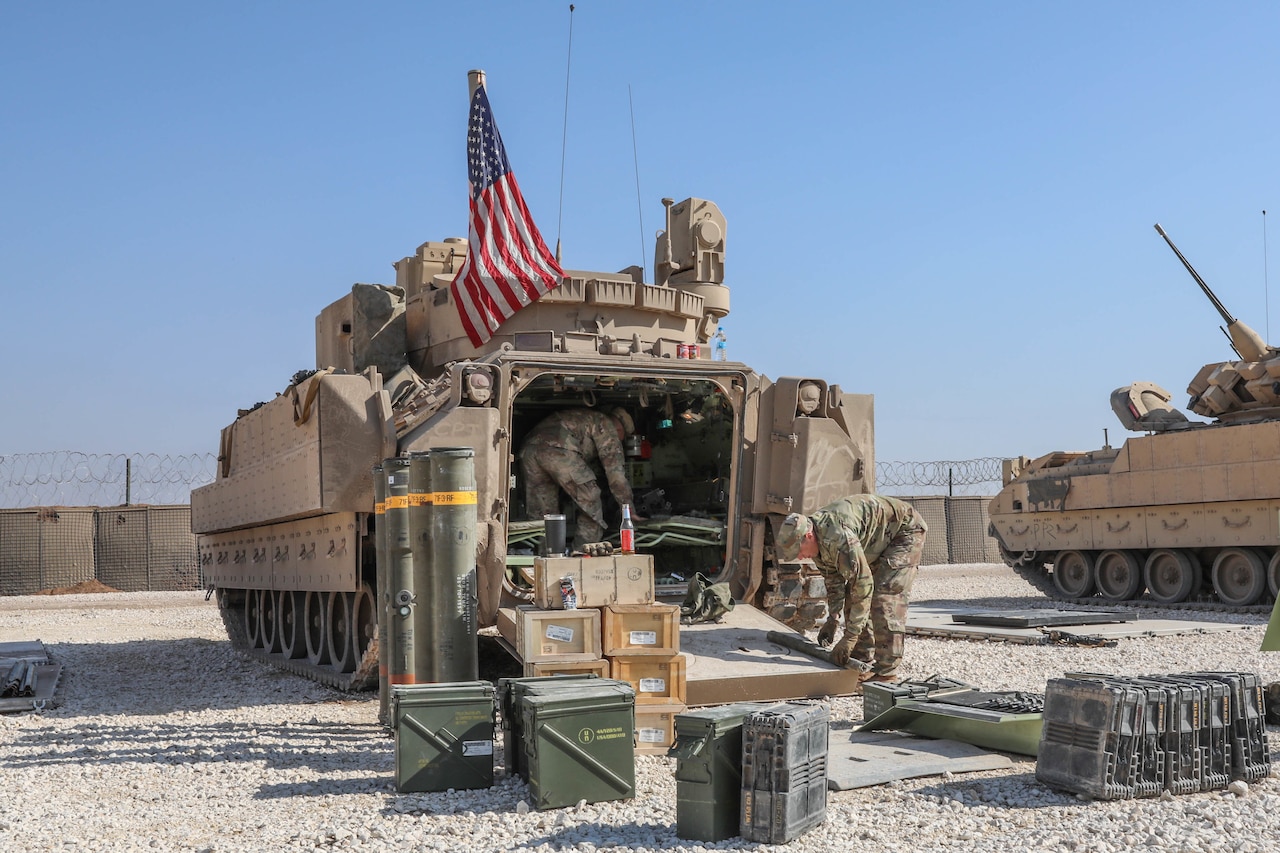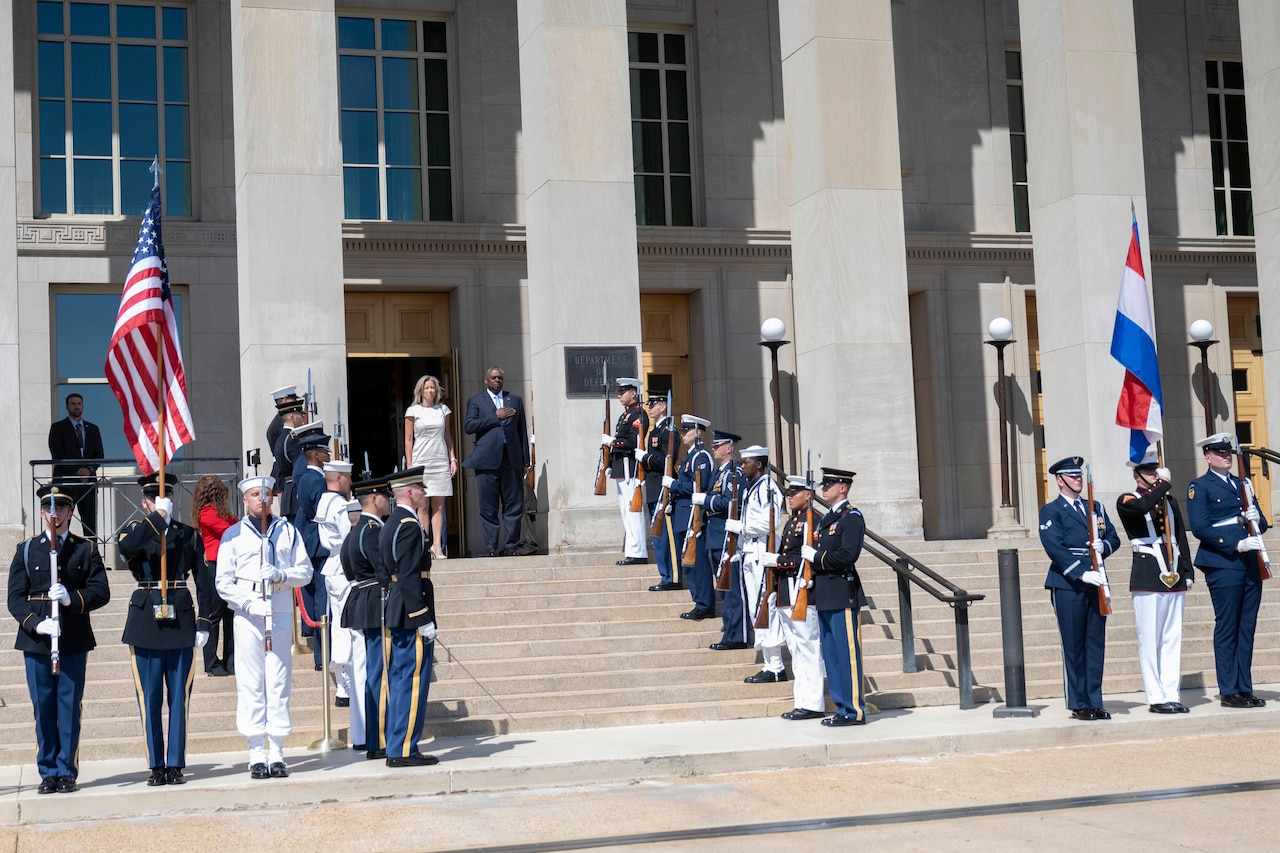
[ad_1]
The U.S. and partner nations continue with the “Defeat ISIS” mission in Syria, while the more than 10,000 ISIS fighters who have been detained within makeshift detention facilities there and the approximately 60,000 displaced persons at the al-Hol and al-Roj camps remain a challenge. The Defense Department has plans to address that challenge.
“The threat which we all know is that ISIS views the detention facilities where its fighters are housed as the population to reconstitute its army,” said Dana Stroul, the deputy assistant secretary of defense for the Middle East, during a conversation yesterday at the Middle East Institute in Washington, D.C. “And [ISIS] looks at al-Hol and al-Roj, and the youth in those camps, as the next generation of ISIS.”
ISIS collapsed quickly, Stroul said, and there weren’t viable facilities to house all the captured ISIS fighters who were placed in makeshift detention facilities, such as in schools or office buildings.
The detention facilities, she said, are overpopulated, insecure and guarded by the Syrian Democratic Forces, who are under significant pressure from multiple armed adversaries, a deteriorating economy that’s exacerbated by a historic drought, and a potential Turkish operation in northern Syria.
The Defense Department, she said, is working on three lines of effort to support the SDF in its efforts to provide for the humane and secure detention of ISIS fighters in its custody. First, she noted, is construction of new detention facilities.
“These new DOD-funded detention facilities will also help enable critical U.S. stabilization priorities, ensuring detainee access to medical care, providing youth detainees with distinct programming and facilities to address their safety and rehabilitation,” Stroul said.
The second effort, Stroul said, is growing and professionalizing the guard force responsible for securing those facilities.
Finally, Stroul said, DOD provides logistical support to State Department-led efforts to repatriate non-Syrian detainees to their home countries.
“On al-Hol, the Department continues to work with the SDF to disrupt ISIS activity and networks that threaten the camp’s residents as well as the broader population of northeast Syria,” Stroul said. “This support includes efforts to reinforce the camp’s physical security architecture, increase the number of security forces operating in and around the camp, and ensure that those forces are appropriately trained to the unique needs of that population.”
Such improvements, she said, enable greater access to the camps for non-governmental organizations, and allow the camp administration to provide services which have been hampered by the security conditions at the camp.
“The most durable solution to the challenges of these detention centers and the displaced person camps is for countries of origin to repatriate, rehabilitate, reintegrate and where appropriate, prosecute their nationals residing in northeast Syria,” Stroul said.
Iraqis comprise a majority of the foreign population in detention facilities and a majority of the entire population at al-Hol, Stroul said, and DOD continues to support State Department efforts to work with the SDF and the government of Iraq to accelerate the pace of Iraqi repatriation efforts.
“[We] commend the real progress that Iraq has demonstrated to date in repatriating its nationals, both detainees and displaced persons from northeast Syria,” she said. “Since May 2021, Iraq has repatriated approximately 2,400 individuals from al-Hol, with the most recent transfer occurring this past June.”
[ad_2]
Source link

:quality(70)/cloudfront-us-east-1.images.arcpublishing.com/mco/T56ADX64ANDYNP5MWRKCULXRZA.jpg)



:quality(70)/cloudfront-us-east-1.images.arcpublishing.com/mco/QBYJTGYCQBHSVITAL32RAO7HAA.jpg)




:quality(70)/cloudfront-us-east-1.images.arcpublishing.com/mco/YVREBMCGTNFNTI6PSBKVQDR7CU.jpg)









